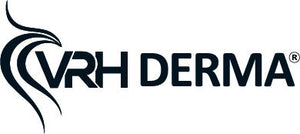Pregnancy Stretch Marks: Causes, Prevention, and Treatment
Pregnancy is a beautiful journey, but it can come with some unexpected changes—one of which is the appearance of stretch marks. If you’re a mom-to-be or new parent wondering about these lines and how to manage them, you’re not alone. Let’s dive into the causes, prevention strategies, and treatment options for pregnancy stretch marks.
Audience Awareness
This blog is designed for expectant mothers, new parents, and anyone interested in learning more about pregnancy-related skin changes. If you’re curious about what causes stretch marks, how to prevent them, or ways to treat them, you’re in the right place.
Content Goal and Value
Our aim is to inform and empower readers with comprehensive knowledge about pregnancy stretch marks. By the end of this post, you’ll have a clear understanding of their causes, preventive measures, and treatment options, making this a valuable resource for your skincare journey.
What Are Stretch Marks?
Stretch marks, or striae, are a common skin condition that occurs when the skin stretches rapidly. This stretching can lead to changes in the elasticity and structure of the skin, resulting in marks that can appear red, purple, or white, depending on your skin tone and the stage of development.
Common Causes
- Rapid Weight Gain: As your body changes during pregnancy, rapid weight gain can stretch the skin beyond its capacity.
- Hormonal Changes: Increased levels of certain hormones during pregnancy can affect skin elasticity, making it more prone to developing stretch marks.
- Genetics: If your mother or sister experienced stretch marks, you may be more likely to develop them too. Your genetic makeup plays a significant role in skin elasticity.
- Age: Younger skin tends to be more elastic, but as skin ages, its ability to stretch diminishes.
Prevention Strategies
While it’s impossible to guarantee that you won’t develop stretch marks, there are several strategies you can employ to minimize your risk.
- Stay Hydrated
Drinking plenty of water helps keep your skin hydrated and may improve its elasticity.
- Maintain a Balanced Diet
Eating a diet rich in vitamins A, C, E, and zinc can support skin health. Foods like avocados, nuts, and leafy greens are excellent choices.
- Moisturize Regularly
Applying moisturizers or oils can help keep your skin supple. Look for products with ingredients like:
- Cocoa Butter
- Shea Butter
- Hyaluronic Acid
- Vitamin E
- Gradual Weight Gain
Aim for a healthy weight gain during pregnancy, as advised by your healthcare provider. A steady gain can help your skin adjust better.
Treatment Options
If you find yourself with stretch marks post-pregnancy, don’t worry—there are effective treatments available.
- Topical Treatments
Products containing retinoids or hyaluronic acid can help improve the appearance of stretch marks by promoting skin renewal. However, retinoids should be avoided during pregnancy and breastfeeding.
- Laser Therapy
Laser treatments can help reduce the redness and improve the texture of stretch marks. Consult a dermatologist to discuss this option.
- Microdermabrasion
This treatment involves exfoliating the skin to improve its appearance and texture. It’s safe to consider after pregnancy.
- Chemical Peels
Chemical peels can help remove dead skin cells and promote new skin growth, potentially improving the look of stretch marks.
Conclusion
Pregnancy stretch marks are a common part of the beautiful journey of motherhood, but understanding their causes, prevention, and treatment options can empower you to manage them effectively. Remember, every woman’s body is unique, and embracing these changes is part of the process.
Call to Action
Have you experienced stretch marks during or after pregnancy? Share your thoughts and experiences in the comments below! Don’t forget to subscribe for more skincare tips and insights tailored for your journey into motherhood.

